No troops left behind: Missing service members buried for decades in an Alaska glacier
On a snowy day just before Thanksgiving in 1952, a plane carrying more than four dozen U.S. troops departed Tacoma, Washington, bound for Anchorage for new jobs and lives at their latest military posting in Alaska.
Worsening weather near the Chugach Mountain Range blinded the pilots and forced them to rely on instruments, causing the plane to slam into Mount Gannett − less than 40 miles from their destination. For the pilots, it was like flying inside a lightbulb − a whiteout.
More than 70 years later, the U.S. military is still searching for all the remains. Playing cards and epaulets and decorations that signify rank are still being pulled from the wreckage in echoes of the post-9/11 recovery. But the harsh Alaska climate allows for only two weeks each summer for this kind of search, testing the military’s promise that no troops will be left behind.
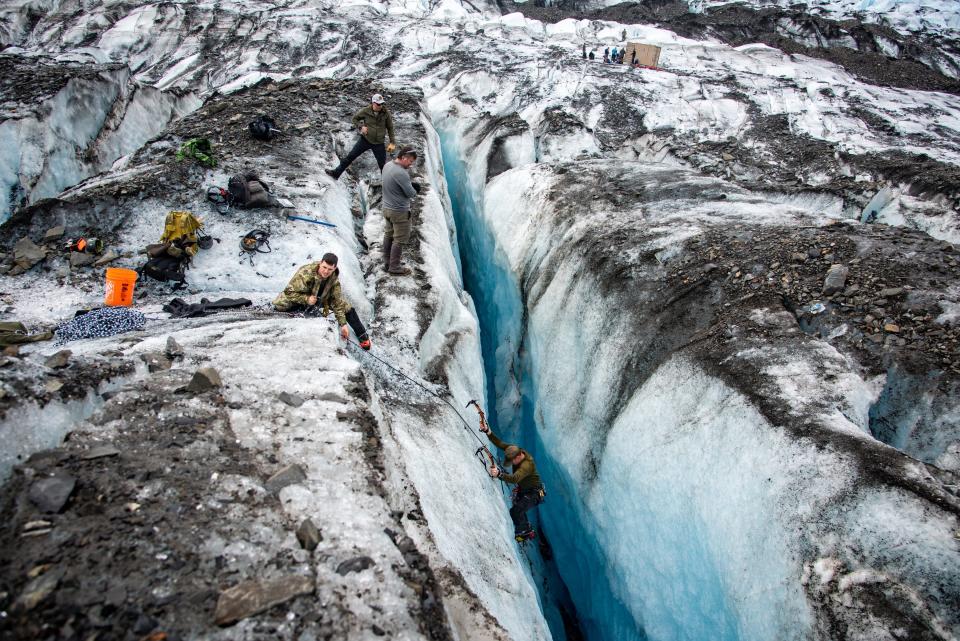
That weather window allows troops to sift through ice and rock to retrieve the remains of 52 troops killed when their plane crashed into a mountain and snow cloaked the wreckage more than 70 years ago.
For the past three summers, Air Force Capt. Lyndi Minott, who at age 31 is generations removed from the crash victims, has taken part in Operation Colony Glacier, the Pentagon's effort to bring them home. Her team has recovered remains of four bodies, which leaves five of the crew still unaccounted for.
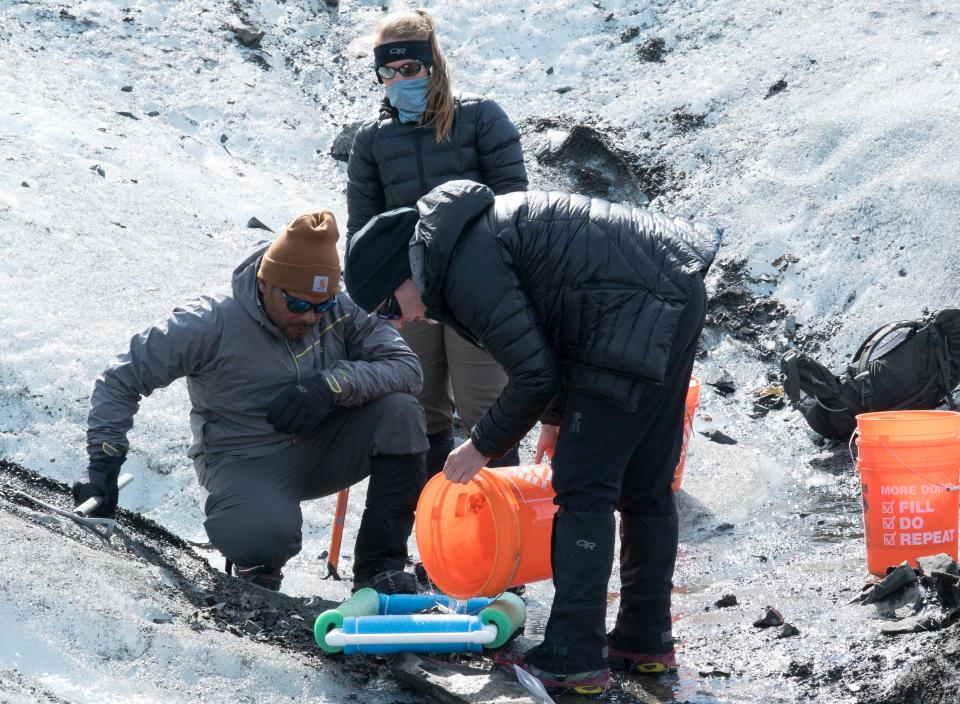
The bodies and wreckage of the Air Force C-124 − a cargo plane used during the Korean War − remained undiscovered, buried under snow and ice, until 2012, when Alaska National Guardsmen discovered debris from the crash while on a training mission. By that time, the glacier had carried their bodies more than 10 miles from the crash site.
The Defense Department regularly identifies remains from troops missing since World War II and the Korean War, branding it the "nation's mission.'' In May, the agency began another multi-year project to retrieve and identify remains of 431 "Unknowns" from the Enoura Maru, a cargo vessel known as a "Hellship." The Imperial Japanese Navy used cargo vessels like the Enoura Maru in World War II to transport prisoners of war. Some troops were buried at sea, some cremated.
“The remains were mixed up, so part of what we need to do is figure out which bones belong together and represent one individual,” Carrie LeGarde, a forensic anthropologist, who leads the operation, said in a news release. “This project is going to be a big challenge.”
On Colony Glacier, the challenge is sifting though ice, rock and grit to find the remaining five troops.
“There's a lot of families that are still waiting,” Minott said. “And we really do appreciate that they're so patient, and they know that we're going out each year to do recovery.”
Nov. 22, 1952, a military plane called 'Old Shaky' crashes
On Nov. 22, 1952, five days before Thanksgiving, 41 Air Force, Army, Navy and Marine Corps troops and 11 crew members took off from McChord Air Force Base bound for Anchorage on a C-124, nicknamed "Old Shaky."
Search and recovery efforts tried but failed to find the crash site in the days after the accident. It wasn’t until late winter in 1953 that rescuers found the debris. Then snow and ice soon obscured the remains of men, their belongings and the plane’s wreckage. They would stay concealed for decades.
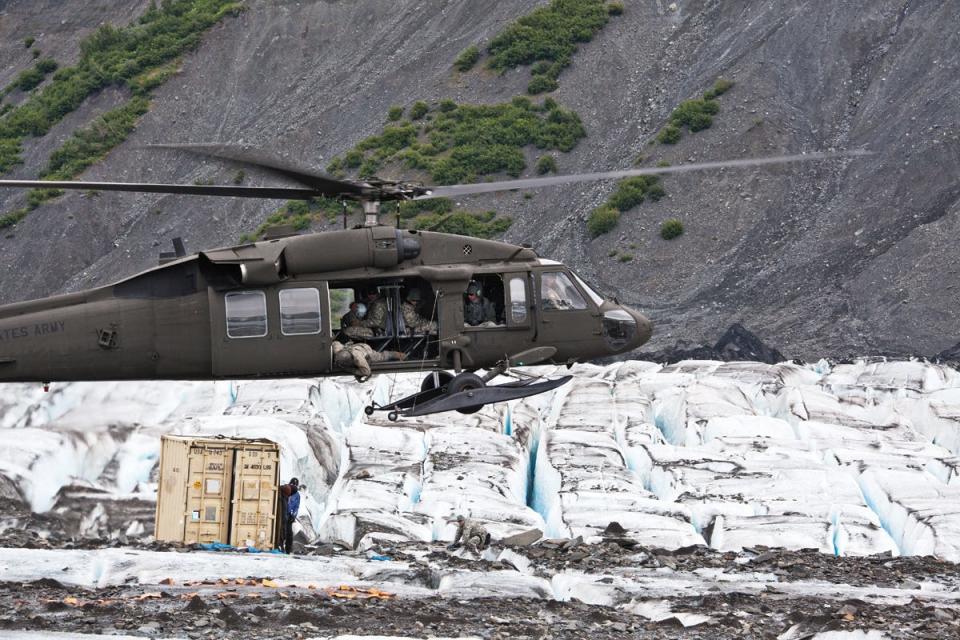
On June 9, 2012, Alaska National Guardsmen flying in a Black Hawk helicopter discovered debris from the crash. Colony Glacier had carried them about 12 miles downslope from the crash site.
Mountain training: What it's like on the ice
Minott is lead planner and ground commander for the recovery. Planning takes months for the annual mission. About a dozen airmen, soldiers and civilians take part. Minott completed a course at the Army’s Mountain Warfare School in Vermont to prepare to descend into the glacier’s crevasses.
“The glacier is an evolving structure,” she said. “It changes each year.”
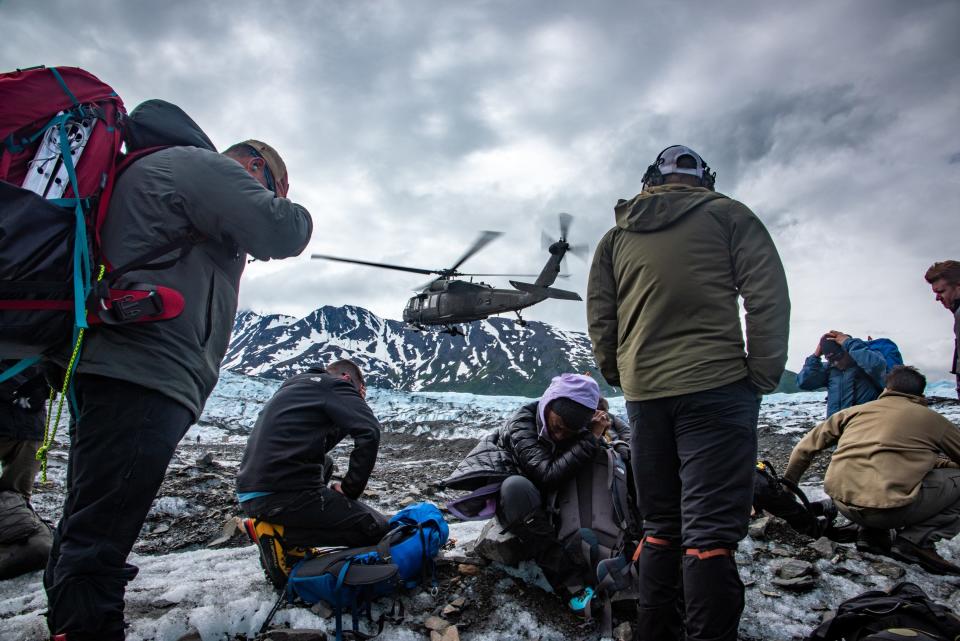
The weather and ice are best in June for the recovery of remains and personal effects, she said.
“The winter snow has melted, and then glacier itself has started to melt,” she said. Helicopters ferry the team and climbing gear to the glacier about 8:30 in the morning.
The past few years have required ropes and climbing equipment to find remains. It can take as long as 18 months using DNA to identify them.
At the time of the crash, the troops had been flying to new duty stations. They carried clothing and keepsakes.
“We're finding things that the service members held valuable,” Minott said. “Items like chessboards and playing cards. That really brings the personal element to the recovery.”
Minott has escorted remains from the crash to family members.
“Really rewarding is the best way I can describe that feeling,” she said. “Being able to provide closure to a loved one.”
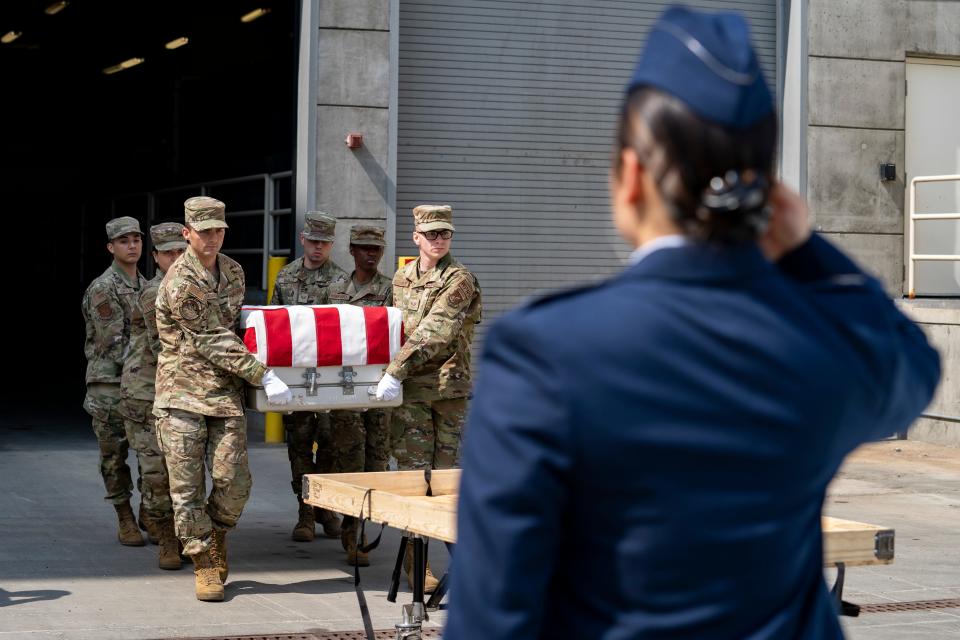
This article originally appeared on USA TODAY: Harsh weather stalls recovery of troops buried in Alaska glacier

